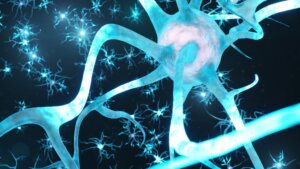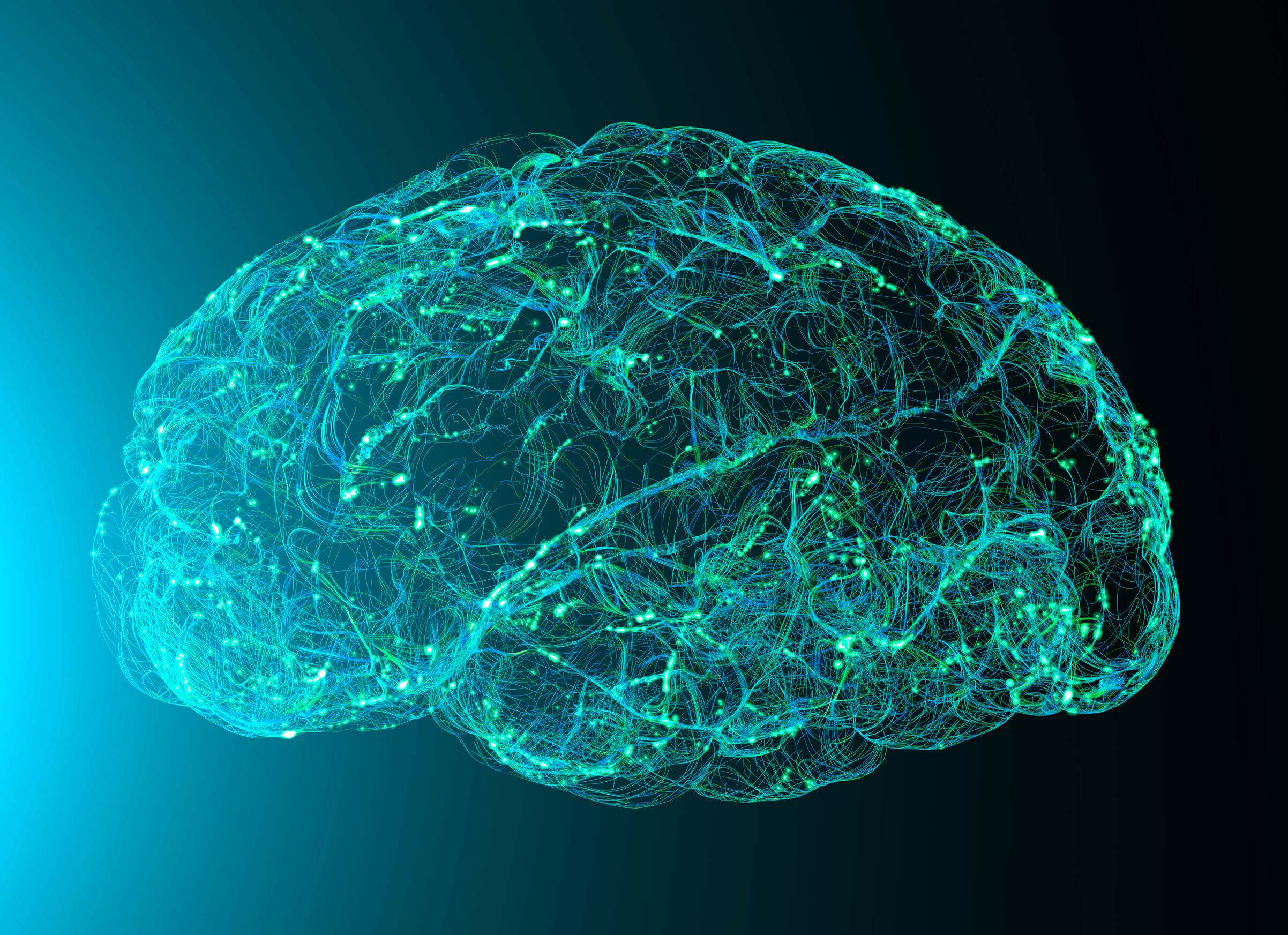Types of Neurons: Characteristics and Functions

The central nervous system is made up of the brain and spinal cord. This is the entire body’s command center, the place where information is processed. To achieve the latter, it uses two types of nerve cells: neurons and glia. Although it’s believed that the latter is more abundant, in reality the former get all the recognition.
Cells of this type act as information messengers. Everything you can feel, do, and think is thanks to them. According to the Queensland Brain Institute, the average adult is believed to have close to 100 billion neurons. Below, we’re going to review its characteristics, types, and some of its basic functions.
Neuron characteristics

Neural cells use electrical impulses and chemical signals to create an extensive network that processes and sends information. Until very recently, scientists believed that cells of this type couldn’t be generated after a certain age.
Today we know that neurogenesis (the mechanism through which new neurons are created) is completely real. Evidence indicates that this process is maintained even in older people, around the age of 80. We can distinguish three basic parts of these cells:
- Cell body: Also known as soma. Inside the body, the nucleus of cells is located and, therefore, their DNA. The nucleus operates as a factory for proteins that then travel to other parts of the neuron.
- Axon: Also known as the main branching fiber or nerve fiber. It resembles a long tail and is attached to the cell body. They have different sizes, although we can classify them as small or large. Some measure less than a millimeter and others can reach more than a meter (they connect the spinal cord to the feet).
- Dendrites: These are responsible for receiving and deriving information. They send out chemicals called neurotransmitters in the process known as chemical synapse. They have a branched structure that varies in size. Think of dendrites as the roots of a tree.
We can distinguish a quarter of these cells, the myelin sheath. This is a fatty material that covers the axons to isolate them, protect them, and avoid interference from other nearby neuronal cells. Sometimes this structure can be damaged and lead to disease, such as multiple sclerosis.
They also speed up the process of conduction of nerve impulses. Patients with multiple sclerosis experience a deterioration of this sheath, causing communication errors.
Types of neurons
Since there are billions of these cells in your body, it isn’t easy to categorize them into specific groups. Despite this, 3 types of neurons are often distinguished. The National Institute of Neurological Disorders and Stroke points out the following.
Sensory
As its name indicates, cells of this type are responsible for processing information from the senses. You can see, hear, feel, smell and taste food thanks to them. The processing of this data can be mechanical (a distant noise) or chemical (molecules that come into contact with your taste buds).
Because of this, researchers consider sensory neurons as essential in order to detect danger signals. The average speed of reading and sending information is 120 meters per second. Most types of sensory neurons are pseudounipolar. That is, the axon splits into two fibers.
Motor neurons
These are the ones that process and send information from the central nervous system to the muscles, glands, and organs throughout the body. They’re responsible for generating movement through the exchange of neurotransmitters. They’re also known as neuronal cells of the spinal cord (most of them are housed there) or efferent neurons.
Two subtypes of motor neurons have been identified: inferior and superior. The former make connections from the spinal cord to the muscles. The latter from the brain to the spinal cord. Its structure is multipolar. That is, they have a single axon and many dendrites. This is the neuron that’s usually reflected in academic materials.
Broadcast
Although not all share the same characteristics, the other types of neurons are called relay, or interneurons. Their mission is to serve as a bridge between the previous cells, so that they form a highly complex circuit.
They can also communicate with each other, creating their own individual networks. This process has been related to functions associated with learning, decision-making, neurogenesis and even the assimilation of reflexes. Its design is multipolar.
Neuron functions

The way you perceive the world is only possible through neural activity. Right now you are reading this and processing it thanks to the extensive network-like circuits of your central and peripheral nervous system. What you do and say, or have thought about doing or saying, is thanks to them. What you feel and perceive, too.
In more technical terms, the functions of neurons are as follows:
- Receiving information.
- Interpreting these signals (to know what to do with them).
- Communicating the signals to other neurons, muscles, glands, and organs (if applicable).
Although it’s very simple to describe it, in reality this mechanism today puzzles the scientists who are in charge of studying it. It isn’t fully understood, although its central aspects are. The whole process is carried out through the synapse and neurotransmitters.
In short, everything you do is possible thanks to hundreds of millions of microscopic cells that connect to each other in an extensive network. They can regenerate well into old age to supply the thousands you lose each day. There are three types with different designs in their structure to facilitate the transmission of information.
The central nervous system is made up of the brain and spinal cord. This is the entire body’s command center, the place where information is processed. To achieve the latter, it uses two types of nerve cells: neurons and glia. Although it’s believed that the latter is more abundant, in reality the former get all the recognition.
Cells of this type act as information messengers. Everything you can feel, do, and think is thanks to them. According to the Queensland Brain Institute, the average adult is believed to have close to 100 billion neurons. Below, we’re going to review its characteristics, types, and some of its basic functions.
Neuron characteristics

Neural cells use electrical impulses and chemical signals to create an extensive network that processes and sends information. Until very recently, scientists believed that cells of this type couldn’t be generated after a certain age.
Today we know that neurogenesis (the mechanism through which new neurons are created) is completely real. Evidence indicates that this process is maintained even in older people, around the age of 80. We can distinguish three basic parts of these cells:
- Cell body: Also known as soma. Inside the body, the nucleus of cells is located and, therefore, their DNA. The nucleus operates as a factory for proteins that then travel to other parts of the neuron.
- Axon: Also known as the main branching fiber or nerve fiber. It resembles a long tail and is attached to the cell body. They have different sizes, although we can classify them as small or large. Some measure less than a millimeter and others can reach more than a meter (they connect the spinal cord to the feet).
- Dendrites: These are responsible for receiving and deriving information. They send out chemicals called neurotransmitters in the process known as chemical synapse. They have a branched structure that varies in size. Think of dendrites as the roots of a tree.
We can distinguish a quarter of these cells, the myelin sheath. This is a fatty material that covers the axons to isolate them, protect them, and avoid interference from other nearby neuronal cells. Sometimes this structure can be damaged and lead to disease, such as multiple sclerosis.
They also speed up the process of conduction of nerve impulses. Patients with multiple sclerosis experience a deterioration of this sheath, causing communication errors.
Types of neurons
Since there are billions of these cells in your body, it isn’t easy to categorize them into specific groups. Despite this, 3 types of neurons are often distinguished. The National Institute of Neurological Disorders and Stroke points out the following.
Sensory
As its name indicates, cells of this type are responsible for processing information from the senses. You can see, hear, feel, smell and taste food thanks to them. The processing of this data can be mechanical (a distant noise) or chemical (molecules that come into contact with your taste buds).
Because of this, researchers consider sensory neurons as essential in order to detect danger signals. The average speed of reading and sending information is 120 meters per second. Most types of sensory neurons are pseudounipolar. That is, the axon splits into two fibers.
Motor neurons
These are the ones that process and send information from the central nervous system to the muscles, glands, and organs throughout the body. They’re responsible for generating movement through the exchange of neurotransmitters. They’re also known as neuronal cells of the spinal cord (most of them are housed there) or efferent neurons.
Two subtypes of motor neurons have been identified: inferior and superior. The former make connections from the spinal cord to the muscles. The latter from the brain to the spinal cord. Its structure is multipolar. That is, they have a single axon and many dendrites. This is the neuron that’s usually reflected in academic materials.
Broadcast
Although not all share the same characteristics, the other types of neurons are called relay, or interneurons. Their mission is to serve as a bridge between the previous cells, so that they form a highly complex circuit.
They can also communicate with each other, creating their own individual networks. This process has been related to functions associated with learning, decision-making, neurogenesis and even the assimilation of reflexes. Its design is multipolar.
Neuron functions

The way you perceive the world is only possible through neural activity. Right now you are reading this and processing it thanks to the extensive network-like circuits of your central and peripheral nervous system. What you do and say, or have thought about doing or saying, is thanks to them. What you feel and perceive, too.
In more technical terms, the functions of neurons are as follows:
- Receiving information.
- Interpreting these signals (to know what to do with them).
- Communicating the signals to other neurons, muscles, glands, and organs (if applicable).
Although it’s very simple to describe it, in reality this mechanism today puzzles the scientists who are in charge of studying it. It isn’t fully understood, although its central aspects are. The whole process is carried out through the synapse and neurotransmitters.
In short, everything you do is possible thanks to hundreds of millions of microscopic cells that connect to each other in an extensive network. They can regenerate well into old age to supply the thousands you lose each day. There are three types with different designs in their structure to facilitate the transmission of information.
- Boldrini M, Fulmore CA, Tartt AN, Simeon LR, Pavlova I, Poposka V, Rosoklija GB, Stankov A, Arango V, Dwork AJ, Hen R, Mann JJ. Human Hippocampal Neurogenesis Persists throughout Aging. Cell Stem Cell. 2018 Apr 5;22(4):589-599.e5.
- Donnelly CR, Chen O, Ji RR. How Do Sensory Neurons Sense Danger Signals? Trends Neurosci. 2020 Oct;43(10):822-838.
Este texto se ofrece únicamente con propósitos informativos y no reemplaza la consulta con un profesional. Ante dudas, consulta a tu especialista.







